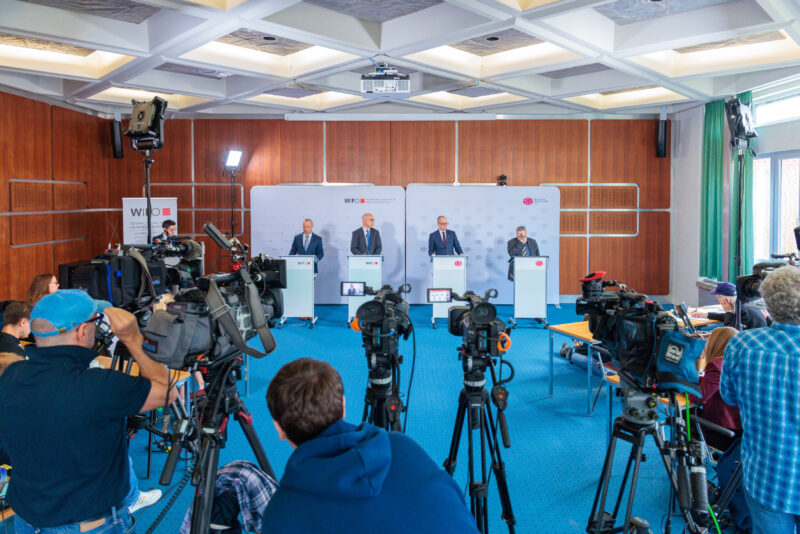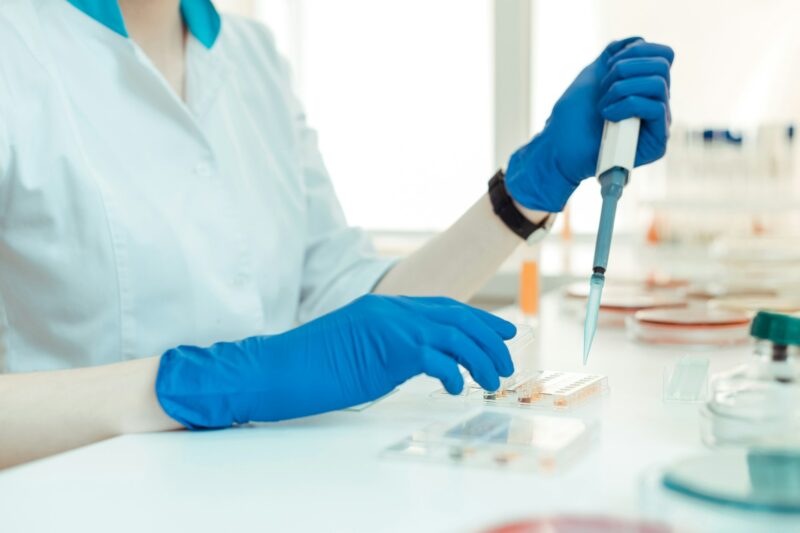
Economic Outlook for 2021 and 2022
A recording of the press conference is available here. For press photos, please click here (© WIFO/Johannes Brunnbauer).
"The further course of economic activity depends to a large extent on the COVID-19 measures taken by the authorities. A new lockdown in April would dampen growth in 2021 by almost one percentage point. In 2022, the recovery would be stronger", says Stefan Ederer, author of the current WIFO forecast.
Economic activity is currently heavily dependent on the measures taken to contain the COVID-19 pandemic. To frame the range of future economic development, this forecast outlines two scenarios: in the opening scenario, the restrictions are completely lifted in the course of spring. The lockdown scenario, on the other hand, assumes a renewed closure of retail and personal services in April 2021. In the first scenario, economic activity picks up already in the spring, with GDP expected to grow by 2.3 percent in 2021 and 4.3 percent in 2022. In the lockdown scenario, the recovery is delayed, with growth of 1.5 percent in 2021 and 4.7 percent in 2022. Private consumption and travel are still weaker in 2022 than before the COVID-19 pandemic. In the labour market, the crisis will remain visible for some time.
Economic activity in Austria is currently heavily influenced by the regulatory restrictions to contain the COVID-19 pandemic. At this juncture (March 2021), both opening and closing measures are being discussed. The present forecast takes into account the uncertainty about the further regulatory conditions by means of two different scenarios. The first scenario ("opening scenario") assumes that there will be no new tightening or lockdown measures and that the regulations currently in force will be gradually lifted in spring 2021. The second scenario ("lockdown scenario"), by contrast, assumes a new four-week closure of retail and personal services in April. In this case, the re-opening in the areas of catering, accommodation and events is delayed. The calculation of the economic effects of the measures assumed in the two scenarios is based on the weekly WIFO estimates of economic activity (WWWI) and on findings from the previous closure and opening phases.
Austrian goods exports and manufacturing were hardly affected by the lockdown measures in autumn and winter and recovered noticeably by the end of 2020. Both sectors benefitted significantly from the recovery in global industrial production and trade in goods. This development is expected to continue in 2021, even if it is currently driven by Asia and the USA, and is delayed in the European Union countries which are important for Austrian exports. In 2022, this pattern is expected to reverse: while European sales markets are expected to grow strongly, the recovery outside Europe is likely to weaken. The construction industry also suffered little from regulatory restrictions and is expected to expand steadily over the forecast period.
On the other hand, the closure measures in November and December 2020 as well as in the first quarter of 2021 significantly dampened both household consumption expenditure and travel, causing economic activity in the retail, catering, accommodation and other services sectors to plummet. In the event that the restrictions are lifted in the spring ("opening scenario"), the level of economic activity in these sectors should increase noticeably. In the case of renewed closures ("lockdown scenario"), economic activity will remain weak in spring and the recovery will start later. In the second scenario, private consumption, travel and value added of the affected economic sectors will therefore grow significantly weaker in 2021 than in the case of relaxations. In any case, the COVID-19 crisis is likely to have a longer-lasting impact: private consumption and travel will be lower in 2022 in both scenarios than before the crisis.
After the sharp slump in economic output in winter, both scenarios expect moderate growth in 2021, followed by a strong recovery in 2022. A new lockdown would significantly dampen economic activity and thus GDP growth in 2021, but due to the delayed recovery, growth would be correspondingly stronger in 2022. In the opening scenario, the Austrian economy is expected to grow by 2.3 percent in 2021 and by 4.3 percent in 2022. In the lockdown scenario, growth amounts to 1.5 percent in 2021 and 4.7 percent in 2022.
In the labour market, the consequences of the COVID-19 crisis will be visible for longer. Although employment is expected to increase significantly over the forecast period, this is only partly due to the hiring of unemployed. In the opening scenario, the unemployment rate falls to 9.2 percent in 2021 and to 8.4 percent in 2022, in the lockdown scenario to 9.3 percent and 8.5 percent, respectively. In 2022, it is thus about one percentage point higher in both scenarios than in the pre-crisis year 2019.
Due to a rise in commodity prices, consumer prices increase by 1.8 percent in both 2021 and 2022. However, inflationary pressure remains subdued due to weak wage development.
The fiscal policy support measures for companies and private individuals put pressure on public budgets. The recovery of the economy reduces the fiscal balance from –8.9 percent (2020) to –7.1 percent (2021) and –3.7 percent (2022) of GDP according to the opening scenario, and to –7.7 percent and –4 percent in the lockdown scenario.
























